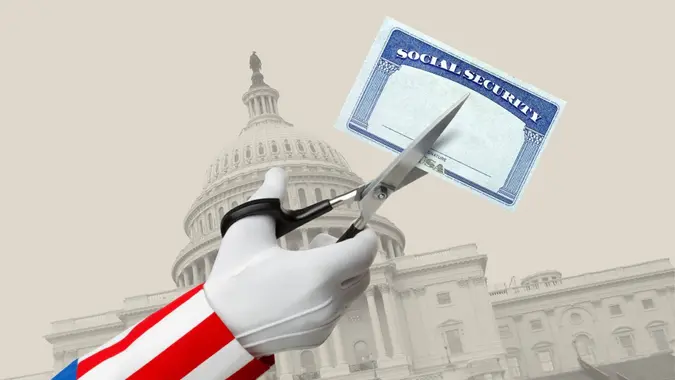Social Security Benefits: How They’ve Changed Over the Last 20 Years

Commitment to Our Readers
GOBankingRates' editorial team is committed to bringing you unbiased reviews and information. We use data-driven methodologies to evaluate financial products and services - our reviews and ratings are not influenced by advertisers. You can read more about our editorial guidelines and our products and services review methodology.

20 Years
Helping You Live Richer

Reviewed
by Experts

Trusted by
Millions of Readers
In an effort to protect the purchasing power of retirees, the Social Security Administration announces a cost-of-living adjustment (COLA) to Social Security payouts every year. The amount of the COLA is based on an index known as the CPI-W, which is the way the SSA monitors inflation.
In some years, the COLA has been essentially nonexistent; in others, it has jumped significantly. For 2023, it will go up 8.7% — the biggest jump in over 40 years.
But has the COLA actually done a good job protecting retirement payments for seniors? The data says yes.
See how the Social Security Benefit has changed over the past 20 years.
Average Retiree Social Security Benefit Since 2002
There’s no better way to see how much the COLA has helped seniors than to look at the payouts in black and white. Here’s the list of average monthly benefits paid to retirees over the past two decades:
- 2002: $874
- 2003: $895
- 2004: $922
- 2005: $955
- 2006: $1,002
- 2007: $1,044
- 2008: $1,079
- 2009: $1,153
- 2010: $1,164
- 2011: $1,176
- 2012: $1,229
- 2013: $1,261
- 2014: $1,294
- 2015: $1,328
- 2016: $1,341
- 2017: $1,360
- 2018: $1,404
- 2019: $1,461
- 2020: $1,503
- 2021: $1,543
- 2022: $1,657
- 2023: $1,827
Does COLA Really Keep Up With Inflation?
There has been a lot of discussion over the past two years over how COLA hasn’t kept up with the actual inflation rate. On a strictly numerical basis, this was true in 2021 and 2022, when CPI rates reached as high as 7% and 9.1% while COLA jumped just 5.9% and 8.7% for the subsequent years.
However, over the long run, COLA has done a very good job of boosting payments to keep retirees’ checks in line with inflation, according to data from the Center for Retirement Research at Boston College. This assertion is supported by the year-by-year data, which shows benefits more than doubling from 2003 to 2023.
The reason that COLA tends to run in line with long-term inflation rates is that COLA lags real-world data a bit, meaning it moves up slowly and moves down slowly. When inflation rates spiked in 2021 and 2022, COLA began moving upward but didn’t quite reach the headline CPI numbers. But, when inflation falls, COLA also will drop more slowly, meaning in coming years it may very well be above the CPI.
 Written by
Written by  Edited by
Edited by 
























